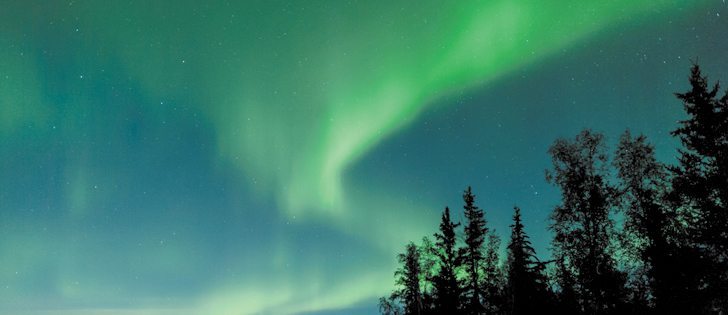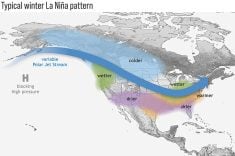Most countries adopt a fatalistic “it’s out of our hands” attitude to-ward the weather. China isn’t one of them.
Every year, the country employs tens of thousands of people and spends as much as $100 million to modify the weather.
The China Daily reports that the Chinese Meteorological Administration and Weather Modification Offices across the country have conducted more than 560,000 operations to prevent or instigate precipitation since 2002.
The country dedicates vast resources to cloud seeding, including:
- 50 planes
- 7,000 guns
- 7,000 rocket launchers
- 47,000 people
Read Also

New World screwworm not seen as trade threat
Canadian cattle producers shouldn’t be worried about the New World screwworm, which has become a massive concern for ranchers in Mexico and is threatening the southern United States
The China Daily said weather modification has helped “release 489.7 billion tons of rain, about 12 times the water storage of the Three Gorges Dam.”
Chinese officials aren’t satisfied with the status quo when it comes to manipulating the weather. A Chinese Meteorological Administration spokesperson told a 2015 meeting that the organization plans to step up its efforts and increase artificial precipitation three to five percent over the next five years.
North American authorities remain less enthusiastic about weather modification.
States in the western United States and other arid regions of the country have experimented with cloud seeding or have active weather modification programs, but they have never gained widespread acceptance.
“I know there were some legal issues with it. If you give Paul a little bit extra water, then Peter is going to be a little upset. That water was mine and you took my water,” said Ron Stewart, a University of Manitoba meteorological expert who studied cloud seeding when he was a professor at the University of Wyoming.
The science and practice of cloud seeding are based on key principles:
- A cloud may contain moisture but it’s not sufficiently cold to form ice.
- Ice is needed within a cloud so ice crystals can grow and then fall out of the cloud as precipitation.
- Weather modification attempts to add more ice to the cloud.
- Silver iodide is dispersed into the cloud with flares mounted on the wings of a plane or from the ground.
- The silver iodide particles en-courage the growth of new ice crystals, increasing the likelihood of precipitation.
Stewart said it’s a scientific fact that cloud seeding changes the microphysics of a cloud. The outstanding scientific question is whether it causes precipitation to fall.
An Israeli study from 2010 that was published in Atmospheric Research looked at the equivalent of 50 years of data on cloud seeding, primarily around the Sea of Galilee. The scientists determined that cloud seeding doesn’t increase rainfall from clouds.
A comprehensive study in Wyoming, which was completed in 2014, came to a different conclusion. Scientists from the National Centre for Atmospheric Research studied snowfall in the mountains of Wyoming for six years. They compared the amount of snow that fell when clouds were seeded to the snowfall in another mountain range that wasn’t seeded with silver iodide.
The initial results were mixed. The seeded clouds produced only three percent more snowfall.
However, the results were more positive after eliminating cases where clouds were insufficiently treated with silver iodide.
“Accumulated evidence from statistical, modeling and physical studies suggests a positive orographic seeding effect over a winter season between five and 15 percent,” the researchers said.
Cloud seeding to instigate rain is a rarity in Canada with the exception of Alberta, which has a weather modification program to suppress hail.
Stewart said that could change in the coming decades if climate change causes more droughts. Prairie provinces may be willing to try weather modification to alleviate crop failures and water shortages.















